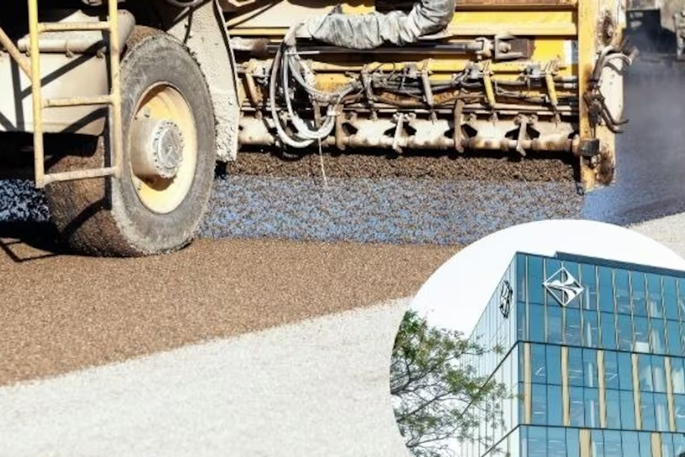Pāpāmoa residents have complained that chipseal makes roads noisier, rougher and less durable, and that some roads set for resealing don’t need the work at all.
Pāpāmoa is not the only suburb, however, where chipseal may replace asphalt on lower-traffic streets.
In Tuesday’s meeting, Michael Wenzel represented residents of Phillips Drive in Oropi Downs with concerns about chipsealing plans.
He said they learned their asphalt would be replaced through a letter giving only four working days to provide feedback.
Wenzel said he went door-to-door asking neighbours for their views. He said he collected 80 signatures of people against chipsealing – the vast majority of those he spoke to.
“In one way, it’s good to see we’re not the only ones,” he said, referring to the other suburbs facing the same fate, such as Bethlehem, Poike, Pyes Pa and Hairini.
Newer parts of Tauranga may have suburban streets laid with asphalt by developers aiming to accommodate construction traffic or attract buyers. Photo / NZME
“We [will] try to find a solution together with the council.”
The council decided it would not be fair to impose the extra cost on all ratepayers to have like-for-like asphalt resealing where it was not considered necessary.
Community self-funding was discussed as a solution for streets that wanted to retain asphalt.
The meeting was told resealing six Pāpāmoa streets with asphalt instead of chipseal could require a lump-sum payment of up to $6000 per household, assuming all households contributed.
The sum could vary depending on the length of the road and the number of homes on it.
Mayor Mahé Drysdale backed this self-funding option.
“If you’re prepared to do it, you need to get around your community and you need to fund the cost difference; and that is only fair, as it is not something for the whole of Tauranga to contribute to.”
Pāpāmoa ward councillor Steve Morris. Photo / David Hall
Pāpāmoa ward councillor Steve Morris wanted the chipseal programme deferred a year so the council could consult on a targeted rate as part of the Annual Plan 2026/27 process in April.
He said affected sites were due to be resealed in February and it was unfair to ask affected residents for “substantial” upfront costs with so little notice.
Welcome Bay ward councillor Hautapu Baker said he believed giving a choice for an increased level of service would “open a can of worms” and overcomplicate things.
“What if not all residents agree? Who becomes a mediator of those discussions?”
He said Wellington and Porirua had attempted to offer this before, and both found it too complex to be viable.
Tauranga City Council Welcome Bay ward councillor Hautapu Baker. Photo / Alisha Evans
“Providing an option with such short notice, while it provides choice for those that are keen … removes the option for those that don’t want the choice to begin with.”
Baker suggested the council consider a well-considered, thorough, debated and consulted option in the Long-Term Plan (LTP) 2027-37 process to take into account all the views and ways to mitigate any potential risks and harms.
The council voted to develop the self-funded asphalt proposal for the LTP.
In the first post-meeting media release on Tuesday, Drysdale said the chipseal programme was delivering value for money and needed to continue, as halting it would be costly.
Tauranga Mayor Mahé Drysdale. Photo / Alex Cairns
The release said subdivision developers often paved their roads with asphalt to accommodate heavy construction vehicles and attract buyers.
Those buyers may not realise their streets would be resealed with chipseal when the asphalt deteriorated.
The council aimed to resurface before damage happened.
It resurfaced 25-35km of city streets annually, and this year, central government funding would cover about half the $9 million cost.
The second media release, on Thursday, emphasised the council had to meet NZ Transport Agency (NZTA) criteria for road maintenance co-funding.
“[NZTA] will only fund the additional cost of asphalt in exceptional circumstances – mainly on arterial routes with high traffic flows.”
Drysdale said like-for-like suburban asphalt resurfacing would “likely mean an increase of at least 2% in rates for every household, which we didn’t feel was an equitable outcome”.
He said the meeting was in response to “significant” feedback from people concerned about planned chipsealing of some deteriorating asphalt streets.
He said during more than two hours of “robust debate”, the council had weighed the options.
While views differed, and the “solutions may not be perfect”, they were the “best we could do” within the council’s constraints.
He said residents living on asphalt roads due to be chipsealed while the new policy was developed could work with the council to reach an agreement for the residents to pay the difference to get asphalt.
This could cost $2000-$10,000 per property, and streets would need to meet eligibility criteria.
Ayla Yeoman is a multimedia journalist based in Tauranga. She grew up in Taupō and studied at the University of Auckland, holding a Bachelor of Arts degree majoring in Communications and Politics & International Relations. She has been a journalist since 2022.

